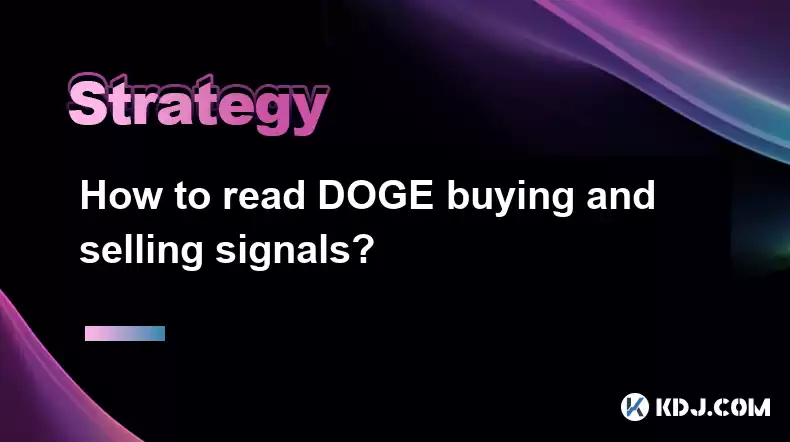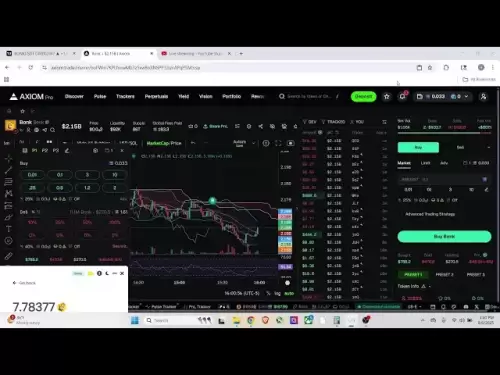-
 Bitcoin
Bitcoin $116200
1.84% -
 Ethereum
Ethereum $3841
6.86% -
 XRP
XRP $3.070
4.25% -
 Tether USDt
Tether USDt $1.000
0.02% -
 BNB
BNB $774.4
1.72% -
 Solana
Solana $172.3
5.17% -
 USDC
USDC $0.9999
0.01% -
 Dogecoin
Dogecoin $0.2136
6.85% -
 TRON
TRON $0.3391
1.21% -
 Cardano
Cardano $0.7667
5.76% -
 Hyperliquid
Hyperliquid $39.10
4.30% -
 Sui
Sui $3.724
9.37% -
 Stellar
Stellar $0.4139
5.86% -
 Chainlink
Chainlink $17.35
6.09% -
 Bitcoin Cash
Bitcoin Cash $573.7
2.52% -
 Hedera
Hedera $0.2518
5.39% -
 Ethena USDe
Ethena USDe $1.001
0.02% -
 Avalanche
Avalanche $22.68
3.57% -
 Litecoin
Litecoin $120.4
3.89% -
 UNUS SED LEO
UNUS SED LEO $8.951
-0.40% -
 Toncoin
Toncoin $3.312
4.62% -
 Shiba Inu
Shiba Inu $0.00001263
4.23% -
 Uniswap
Uniswap $10.14
6.89% -
 Polkadot
Polkadot $3.778
5.04% -
 Dai
Dai $1.000
0.01% -
 Monero
Monero $276.9
-4.52% -
 Bitget Token
Bitget Token $4.394
1.57% -
 Cronos
Cronos $0.1475
6.05% -
 Pepe
Pepe $0.00001081
5.27% -
 Aave
Aave $274.5
7.59%
How to read DOGE buying and selling signals?
DOGE trading signals include technical indicators like moving averages and RSI, and fundamental factors like news and market sentiment, guiding buy/sell decisions.
Apr 20, 2025 at 03:07 pm

Understanding DOGE Buying and Selling Signals
DOGE, short for Dogecoin, is a popular cryptocurrency known for its meme origins and community-driven nature. To navigate the volatile world of DOGE trading, understanding how to read buying and selling signals is crucial. These signals help traders make informed decisions on when to enter or exit the market. This article will delve into the various signals used in DOGE trading, how to interpret them, and how to use them effectively.
Types of DOGE Trading Signals
Trading signals for DOGE can be broadly categorized into technical and fundamental signals. Technical signals are derived from analyzing price charts and market indicators, while fundamental signals come from news, events, and broader market sentiment.
Technical Signals
Technical analysis involves studying historical price data and chart patterns to predict future price movements. Here are some common technical signals used in DOGE trading:
Moving Averages: These indicators smooth out price data to identify trends over time. A golden cross, where a short-term moving average crosses above a long-term moving average, is seen as a bullish signal. Conversely, a death cross, where a short-term moving average crosses below a long-term moving average, is considered bearish.
Relative Strength Index (RSI): The RSI measures the speed and change of price movements. An RSI above 70 indicates that DOGE may be overbought, suggesting a potential selling opportunity. An RSI below 30 suggests DOGE may be oversold, indicating a potential buying opportunity.
Bollinger Bands: These bands measure market volatility. When DOGE's price touches the upper Bollinger Band, it might be overbought, and when it touches the lower band, it might be oversold.
Candlestick Patterns: Patterns like doji, hammer, and shooting star can provide insights into potential reversals or continuations in DOGE's price.
Fundamental Signals
Fundamental analysis involves evaluating DOGE's intrinsic value based on external factors. Here are some fundamental signals to watch:
News and Events: Announcements related to DOGE, such as endorsements by celebrities or changes in the development team, can significantly impact its price. Positive news can drive buying, while negative news can lead to selling.
Market Sentiment: The overall mood of the cryptocurrency market can influence DOGE's price. Bullish sentiment can lead to increased buying, while bearish sentiment can prompt selling.
Adoption and Use Cases: Increased adoption by businesses or platforms can signal a bullish trend for DOGE. Conversely, a decrease in use cases might suggest a bearish trend.
Interpreting DOGE Buying and Selling Signals
Understanding how to interpret these signals is key to making effective trading decisions. Here’s a detailed look at how to read these signals:
Interpreting Technical Signals
Moving Averages: When the short-term moving average (e.g., 50-day) crosses above the long-term moving average (e.g., 200-day), it’s a golden cross, indicating a potential buying opportunity. If the short-term moving average crosses below the long-term moving average, it’s a death cross, suggesting a potential selling opportunity.
RSI: If the RSI is above 70, DOGE might be overbought, indicating a potential selling signal. If the RSI is below 30, DOGE might be oversold, suggesting a potential buying signal. However, it’s important to consider other indicators alongside RSI to confirm the signal.
Bollinger Bands: If DOGE's price is at the upper Bollinger Band, it might be overbought, suggesting a potential selling opportunity. If the price is at the lower Bollinger Band, it might be oversold, indicating a potential buying opportunity.
Candlestick Patterns: A doji indicates indecision in the market and could signal a potential reversal. A hammer at the bottom of a downtrend suggests a potential bullish reversal, while a shooting star at the top of an uptrend suggests a potential bearish reversal.
Interpreting Fundamental Signals
News and Events: Positive news, such as a major company announcing it will accept DOGE as payment, can lead to increased buying. Negative news, such as regulatory crackdowns, can lead to increased selling.
Market Sentiment: Positive market sentiment, often driven by bullish trends in the broader cryptocurrency market, can lead to increased buying of DOGE. Negative sentiment, often driven by bearish trends, can lead to increased selling.
Adoption and Use Cases: Increased adoption, such as more businesses accepting DOGE or new use cases being developed, can signal a bullish trend. Decreased adoption or fewer use cases can signal a bearish trend.
Using DOGE Buying and Selling Signals in Trading
To effectively use these signals in trading, follow these steps:
Monitor Multiple Indicators: Relying on a single indicator can be misleading. Use a combination of technical and fundamental signals to make more informed decisions.
Set Clear Entry and Exit Points: Based on the signals, set clear entry and exit points for your trades. For example, if you see a golden cross, you might enter a long position, and if you see a death cross, you might exit the position.
Use Stop-Loss and Take-Profit Orders: To manage risk, use stop-loss orders to limit potential losses and take-profit orders to secure gains when the price reaches your target.
Stay Informed: Keep up with the latest news and events related to DOGE and the broader cryptocurrency market to stay ahead of potential market movements.
Practical Example of Using DOGE Signals
Here’s a practical example of how you might use these signals to trade DOGE:
Scenario: You notice that DOGE's 50-day moving average has crossed above its 200-day moving average, indicating a golden cross. Additionally, the RSI is at 65, suggesting that DOGE is not yet overbought. There’s also positive news about a major retailer starting to accept DOGE as payment.
Action: Based on these signals, you decide to enter a long position on DOGE. You set a stop-loss order at 10% below your entry price to manage risk and a take-profit order at 20% above your entry price to secure potential gains.
Monitoring: You continue to monitor the market, watching for any changes in the technical indicators or new fundamental news that might affect your position.
Frequently Asked Questions
Q: How often should I check DOGE trading signals?
A: It’s advisable to check trading signals at least daily, especially if you are actively trading. However, for long-term investors, weekly checks might suffice. The frequency can also depend on market volatility and significant news events.
Q: Can I rely solely on technical analysis for trading DOGE?
A: While technical analysis is a powerful tool, it’s best used in conjunction with fundamental analysis. Relying solely on technical analysis might cause you to miss important market-moving events or news that could affect DOGE’s price.
Q: How do I know if a trading signal is reliable?
A: The reliability of a trading signal can be assessed by its historical accuracy and the context in which it appears. It’s important to backtest signals using historical data and to consider multiple signals to confirm a trading decision. Additionally, understanding the broader market context and sentiment can help gauge the reliability of a signal.
Q: What should I do if I see conflicting signals for DOGE?
A: If you encounter conflicting signals, it’s best to wait for more clarity. You can also consider the weight of each signal based on its historical accuracy and the broader market context. Sometimes, taking no action until the signals align more clearly can be the best strategy.
Disclaimer:info@kdj.com
The information provided is not trading advice. kdj.com does not assume any responsibility for any investments made based on the information provided in this article. Cryptocurrencies are highly volatile and it is highly recommended that you invest with caution after thorough research!
If you believe that the content used on this website infringes your copyright, please contact us immediately (info@kdj.com) and we will delete it promptly.
- Ollama Turbo & GPT-OSS: Revolutionizing AI Model Accessibility and Speed
- 2025-08-07 20:29:33
- Bitcoin Ordinals: NFTs Evolving Bitcoin or a Fleeting Fad?
- 2025-08-07 20:29:33
- BlockchainFX, Bitcoin Swift, Crypto Presales: What's the Hype?
- 2025-08-07 19:10:13
- Pepe Dollar (PEPD) vs. SPX6900: The Meme Coin Battle of 2025
- 2025-08-07 19:50:12
- XRP Investment Regret: Are You Missing Out on the Next Big Thing?
- 2025-08-07 19:50:12
- XRPINU: More Than Just a Meme? Roadmap, Liquidity, and the Future of Funny Money
- 2025-08-07 19:56:46
Related knowledge

How to avoid common crypto investment mistakes?
Jul 13,2025 at 01:35am
Understanding the Risks of Crypto InvestmentInvesting in cryptocurrency can be highly rewarding, but it also comes with significant risks. One of the ...

What is a long-short crypto strategy?
Jul 15,2025 at 10:56am
Understanding the Basics of a Long-Short Crypto StrategyA long-short crypto strategy is an investment approach where traders simultaneously take long ...

What is a long-short crypto strategy?
Jul 11,2025 at 01:28pm
Understanding the Basics of Long-Short Crypto StrategyA long-short crypto strategy is an investment approach where traders take both long and short po...

How to use the RSI indicator for crypto?
Jul 12,2025 at 03:56pm
Understanding the RSI Indicator in Cryptocurrency TradingThe Relative Strength Index (RSI) is a momentum oscillator used to measure the speed and chan...

Is copy trading a good strategy for crypto beginners?
Jul 12,2025 at 08:28am
Understanding Copy Trading in the Cryptocurrency MarketCopy trading is a strategy where novice traders replicate the trades of experienced investors a...

How to build a crypto portfolio with $1000?
Jul 13,2025 at 08:14pm
Understanding the Basics of Cryptocurrency InvestmentBuilding a crypto portfolio with $1000 starts with understanding the fundamentals of cryptocurren...

How to avoid common crypto investment mistakes?
Jul 13,2025 at 01:35am
Understanding the Risks of Crypto InvestmentInvesting in cryptocurrency can be highly rewarding, but it also comes with significant risks. One of the ...

What is a long-short crypto strategy?
Jul 15,2025 at 10:56am
Understanding the Basics of a Long-Short Crypto StrategyA long-short crypto strategy is an investment approach where traders simultaneously take long ...

What is a long-short crypto strategy?
Jul 11,2025 at 01:28pm
Understanding the Basics of Long-Short Crypto StrategyA long-short crypto strategy is an investment approach where traders take both long and short po...

How to use the RSI indicator for crypto?
Jul 12,2025 at 03:56pm
Understanding the RSI Indicator in Cryptocurrency TradingThe Relative Strength Index (RSI) is a momentum oscillator used to measure the speed and chan...

Is copy trading a good strategy for crypto beginners?
Jul 12,2025 at 08:28am
Understanding Copy Trading in the Cryptocurrency MarketCopy trading is a strategy where novice traders replicate the trades of experienced investors a...

How to build a crypto portfolio with $1000?
Jul 13,2025 at 08:14pm
Understanding the Basics of Cryptocurrency InvestmentBuilding a crypto portfolio with $1000 starts with understanding the fundamentals of cryptocurren...
See all articles

























































































